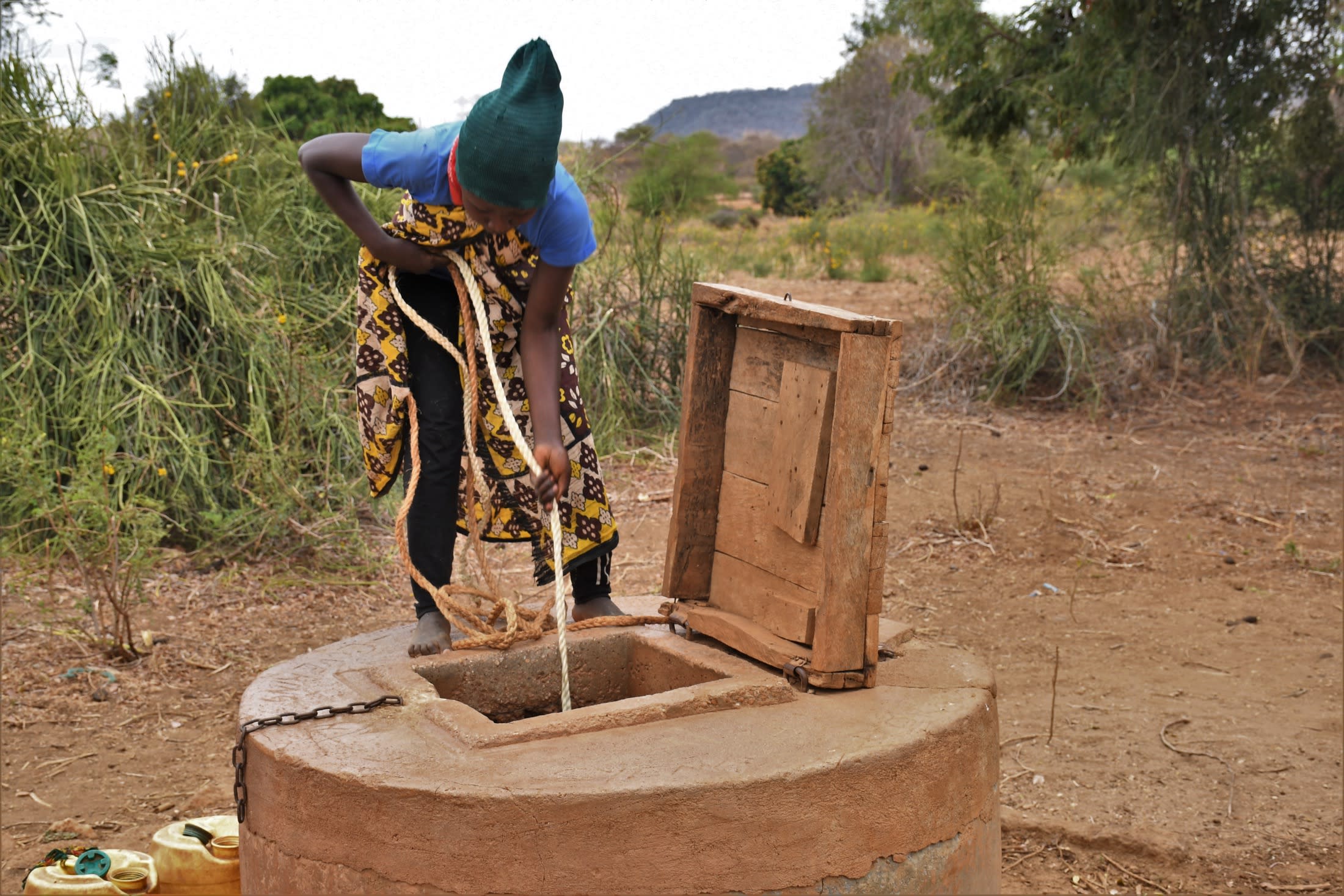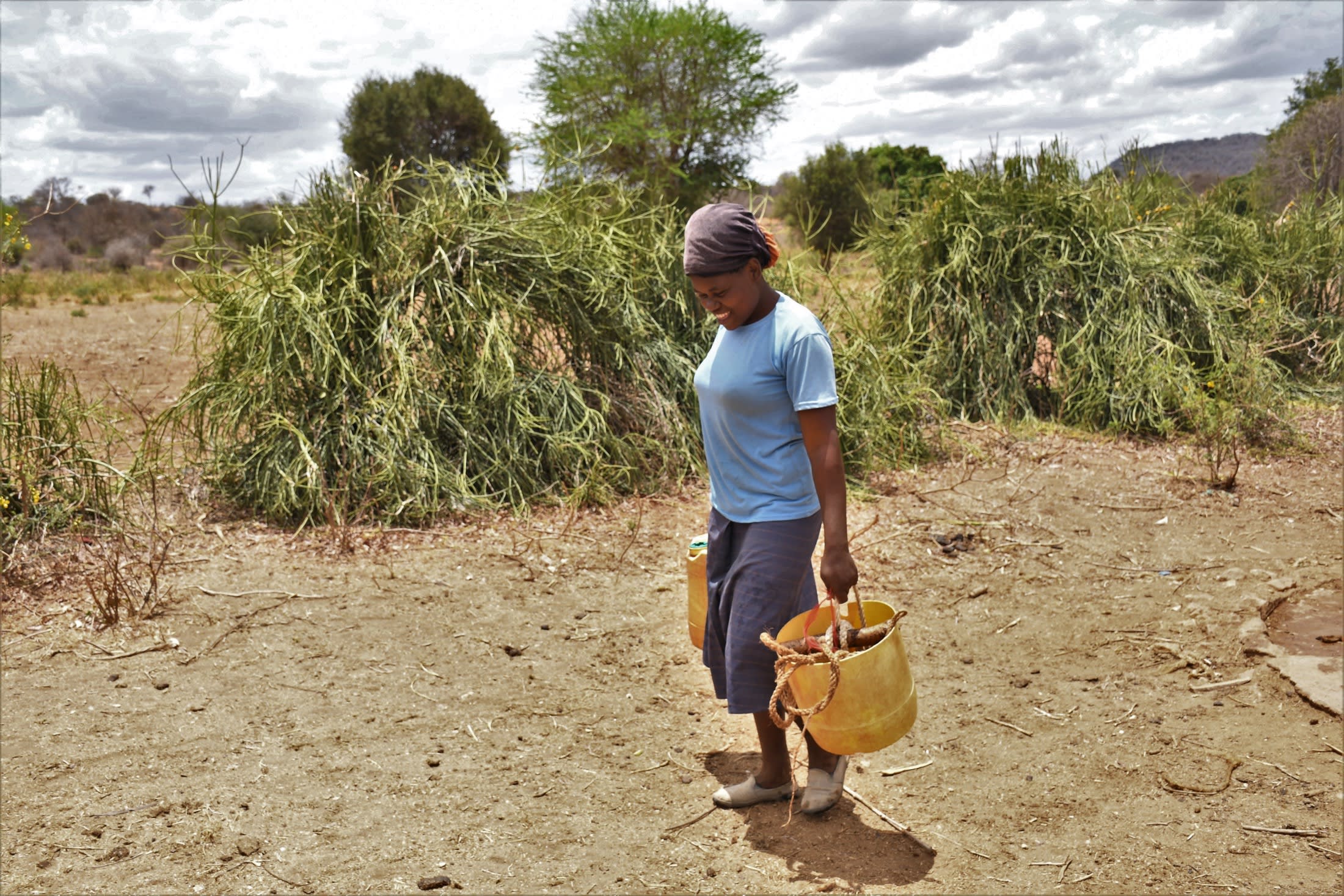This region experiences harsh, prolonged dry seasons, so community members in Kaghui have to walk up to 4 kilometers (2.5 miles) to access water, some walking up to an hour each way and making two trips a day.
They only have two water options, and neither is easy, but water is necessary to survive and a difficult commodity to obtain.
They can use a hand-dug well that requires them to haul water up by bucket. This source is open to contamination and often overcrowded, wasting valuable time that could be used doing other daily tasks.

Or they can collect salty water from the river, which also means digging scoop holes during the dry season to reach below the ground's surface for water.
Either choice leaves them exhausted while carrying heavy containers for the long return journey home.
Young children like Musyoki M., an 8-year-old boy, find the task of collecting water incredibly arduous. "The water extracted from the scoop holes is contaminated and leads to infections and stomachaches, typhoid, amoeba, or dysentery. Whenever I get ill, I have to forego learning, which affects my academic performance. I also have to carry water from the river to school every day, which leaves me exhausted and unable to focus on my studies appropriately."

Even adults struggle to collect enough water to meet their daily needs for drinking, cooking, and hygiene tasks as shared by Muyathi Mwanza (pictured above), a 57-year-old farmer. "There is not enough water for hygiene and sanitation. Therefore, my house and latrine are cleaned once in a while. I am also highly exposed to infections such as COVID-19 because I have to use water sparingly, which leaves negligible amounts of water for handwashing."
With reliable water provided by this new sand dam, which will be centrally located in their community, the people of Kaghui will have more time and energy to commit to their daily life and development projects that have been impossible before now, and waterborne illnesses will not be a constant drain on their health and finances.
Reliable Water for Kaghui
Our main entry point into Kaghui Community has been the Utethyo wa Kaghui Self-Help Group, which is comprised of households that are working together to address water and food scarcity in their region. These members will be our hands and feet in both constructing water projects and spreading the message of good hygiene and sanitation to everyone.
Hand-Dug Well
This particular hand-dug well will be built adjacent to a sand dam project, which will supply clean drinking water once it rains. We have supplied the group with the tools needed for excavation. With the guidance of our artisans and mechanics, the excavated well will be cased, sealed with a well pad, and then finished with a new AfriDev pump.
Excavation takes a month or more on average, depending on the nature of the rock beneath. Construction of the well lining and installation of the pump takes 12 days maximum. The well will be lined with a concrete wall including perforations so that once it rains, water will filter in from the sand dam.
This well will bring clean water closer to families.
New Knowledge
These community members currently do their best to practice good hygiene and sanitation, but their severe lack of water has been a big hindrance to reaching their fullest potential.
We will hold hygiene and sanitation training sessions with the Self-Help Group and other community members to teach about important hygiene practices and daily habits to establish at the personal, household, and community level. This training will help to ensure that participants have the knowledge they need to make the most out of their new water point as soon as water is flowing.
One of the most important topics we plan to cover is the handling, storage, and treatment of water. Having a clean water source will be extremely helpful, but it is useless if water gets contaminated by the time it is consumed. We will also emphasize the importance of handwashing.
We and the community strongly believe that all of these components will work together to improve living standards here, which will help to unlock the potential for these community members to live better, healthier lives.
We typically work with self-help groups for 3 to 5 years on multiple water projects. We will conduct follow-up visits and refresher trainings during this period and remain in contact with the group after all of the projects are completed to support their efforts to improve sanitation and hygiene.

 Protected Dug Well
Protected Dug Well
 Rehabilitation Project
Rehabilitation Project































